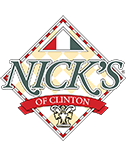Food Safety Tips for a Healthy Thanksgiving
America’s biggest food holiday is just around the corner. While it’s exciting to get together with family and friends for a delicious and filling Thanksgiving feast, there are some real risks of illness and injury if you don’t handle and prepare food properly. To ensure your meal is memorable for all the right reasons, here are some food safety tips for a healthy Thanksgiving feast.
Top Dangers Faced from Handling Food at Thanksgiving
When you don’t handle food properly, you risk a range of unpleasant and even catastrophic outcomes. The first is from injuries. These can happen due to cuts from sharp knives, pinched or broken fingers from drawers and other kitchen tools, and burns from grease or various hot items.
The second danger is foodborne illnesses, which result from contaminants or bacteria in food products. Also known as food poisoning, the results of exposure to these contaminants can range from mild to life-threatening.
Food Safety Tips for a Healthy Thanksgiving
Nothing can ruin a happy Thanksgiving quicker than an unplanned injury in the kitchen or a foodborne illness. That’s why using caution when preparing your holiday feast is critical. After all, no one wants to give up a turkey dinner in favor of whatever they’re serving at the local emergency room. Here are some food safety tips that can help you avoid these injuries and illnesses, making your Thanksgiving as healthy and safe as possible.
1. Thaw Your Bird Correctly
Make sure you keep your turkey in the freezer until it’s time to thaw it. Avoid thawing poultry by leaving it on the counter. Instead, you can thaw it slowly in the refrigerator, give it a cold-water bath, or defrost it in the microwave.
2. Clean Surfaces and Your Hands Frequently
According to one USDA study, 87% of participants said they washed their hands before email prep, but only about half of those were observed doing so. Your food preparation surfaces and your hands must be clean to avoid the spread of bacteria.
3. Separate Prepared from Raw Foods
Keep poultry, other meat, and eggs separate from other food while preparing your dishes. For example, you should have separate cutting boards for raw meat and veggies. This prevents cross-contamination of bacteria.
4. Properly Prepare Your Stuffing
To ensure your stuffing is properly prepared, cook it separately in a casserole dish. Technically, this makes it “dressing” instead of “stuffing.” If you decide to “stuff” your bird with dressing, don’t overstuff it, and make sure the dressing is cooked to at least 165 degrees F.
5. Make Your Cooking Area a Kid-Free Zone
If you are hosting a house full of guests, making the kitchen a child-free zone will be much safer for everyone. Hot dishes, sharp objects, and other hazards can cause serious injuries and put a damper on the fun.
6. Use Extreme Caution When Frying Turkeys
Frying turkeys has become a popular trend over the past decade. While fried birds are delicious, it takes some skill and know-how to get the job done safely. In fact, many accidents and injuries happen annually surrounding turkey fryers, so use extreme caution if this is your plan.
7. Make Sure to Fully Cook Your Bird
There are many ways to cook a turkey, but it must be fully cooked before you serve it, or you risk giving yourself and your guests food poisoning. The safe internal temperature of the turkey should be 165 degrees F. Many turkeys come with a pop-up thermometer that lets you know when it’s done.
8. Be Prepared for Fires or Injuries
The last thing you want is a kitchen fire or a serious injury that sidelines your family celebration. Be prepared for the unexpected by having a fire extinguisher and first aid kit ready.
9. Promptly Refrigerate Leftovers
When serving Thanksgiving dinner, don’t forget the “two-hour rule.” Any perishable foods that sit out at room temperature for more than two hours are unsafe to eat. Hot food should be kept hot, and cold food cold. After your meal is over, wrap up your leftovers quickly and put them in the refrigerator.
10. Only Keep Leftovers for a Limited Time
Having Thanksgiving leftovers the next day and days after the feast is one of the best parts of this holiday. For these to be safe to eat, make sure you consume them within a week of the big day.
Shop at Nick’s of Clinton For Your Thanksgiving Meal Ingredients
Now that you know how to stay safe while preparing your holiday meal, it’s time to go shopping. You can get everything you need to create a delicious Thanksgiving meal at Nick’s of Clinton. We have built a reputation for offering the highest quality products at the most affordable prices.
Nick’s meat counter is the ideal spot to help you choose your turkey. We also offer produce, fresh meats and cheeses, pre-made items, and a large selection of beer, wine, and spirits. Visit us today or call (301) 843-4825 with any questions.

